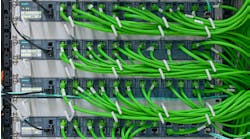By Rahul Bammi, chief business officer with View
As part of my job, I talk to CEOs and CIOs of some of the world’s largest companies, and I was particularly struck by one executive who told me recently, “This is the year I’m going to make all my buildings smart.”
That’s a consistent theme I’m hearing from leaders around the world. They’re all trying to solve similar problems brought on by big societal trends. There’s pressure to build more sustainable structures and create experiences that benefit the health and productivity of occupants while still running a successful portfolio. Recent advancements in cloud computing, security, and machine learning make this the right moment.
The digital transformation of real estate is long overdue. How much have buildings really evolved since the introduction of electricity, air conditioning and elevators? Other than flashy touches here and there, buildings have remained pretty static. However, today’s tenants are demanding more of their buildings, and industry leaders are taking concrete steps to use technology to better serve their customers and end-users.
Perhaps the most significant impetus for change comes from a growing emphasis on sustainability and reducing our carbon footprint. Buildings consume almost 40% of all energy and are the single largest contributor to climate change, so they need to become more energy-efficient. Property owners are allocating resources to measure their energy and carbon footprints and spending money on solutions that automate energy savings while simultaneously improving experiences for those who use the buildings.
There is a similar push to improve health and wellness in indoor spaces. From doctors to designers, experts have told us for years that the quality of our environments matters, and now the rest of the world is catching up. This increased awareness has been accelerated by COVID, as people pay more attention to the air they breathe, the levels of carbon dioxide in a room, their exposure to natural daylight and how all these factors impact our health. The pandemic has also altered how we will function in communal workspaces. Hybrid work is here to stay, so companies must give people a reason to return to the office or the factory; they must find ways to collaborate effectively with their remote colleagues, and build culture.
The benefits of using technology to transform buildings to benefit both people and the planet are already known. The benefits of natural light have been proven for more than a century. Humans are inherently an outdoor species; however, we spend more than 90% of our time indoors. Workers who live and work in buildings with smart windows that automatically adjust to control glare and heat report half as many headaches and incidents of eyestrain, lower stress, and higher productivity than people working in spaces with conventional windows and blinds.
Cybersecurity is another topic near the top of property owners’ list of priorities. We now read about major hacks, privacy breaches and data thefts almost every day. As a result, building owners are beginning to treat their assets like digital assets and invest in securing them ahead of potential attacks.
There is a big push to use technology behind the scenes to make building operations more cost- and time-efficient and more predictive. Your workplace might already be implementing solutions that reduce electricity and water usage, predict equipment failures before they occur, and provide insights so they can make smarter decisions to manage their assets. In larger enterprises, portfolio managers are using these tools to centralize the management of all their assets and simplify their capital planning—smart business strategies. Ultimately, these solutions simplify the day-to-day activities for property owners and managers and increase the value of their assets.
As owners upgrade their buildings with disparate point solutions, their ability to create a truly “smart building” can be limited when data ends up siloed in different systems. For example, optimizing the energy consumption of an HVAC system needs a combination of data from an occupancy sensing solution and different air quality sensors being fed into a third building management system. This requires extensive data and system integration, and property owners are being forced to become technology integrators to realize the full value of their technology investments. Instead, they need an operating system that hides all the complexity and just works so they can focus on their real jobs: serving their tenants or workforces while managing their buildings.


